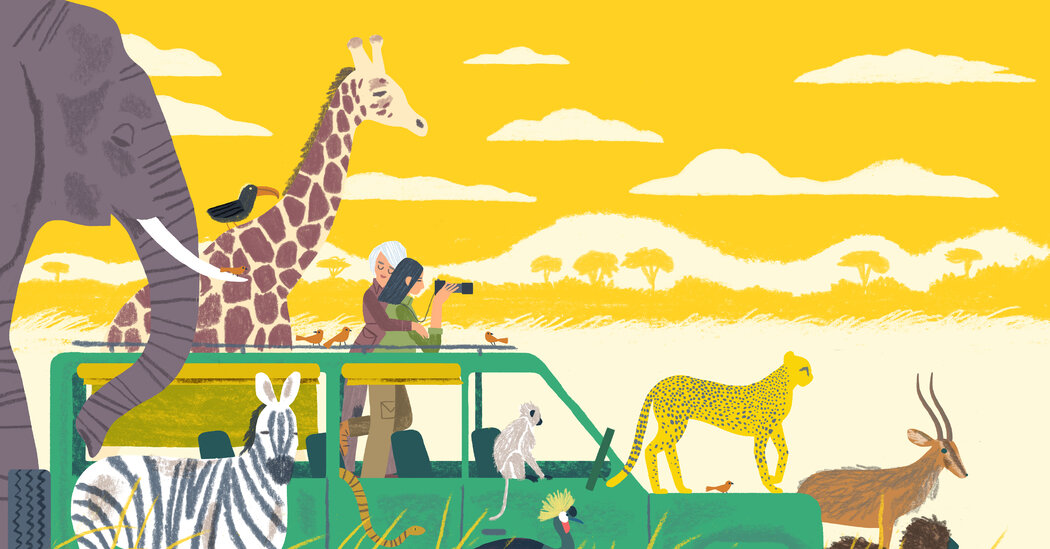When a parade of elephants marched by, I knew Sammy had found, well, her giraffes. She adored them from trunk to tail, couldn’t get enough of their baggy skin, their majestic selves. “The ones in the zoo always look so sad,” she said, eyeing a steady line of impossibly graceful creatures en route to a swampy pond. “But here—” She inhaled Pili’s fact treasury: They stand thigh-deep in water to cool off. Throwing dirt is cosmetic; the dust is their moisturizer and prevents sunburn and dryness. It’s also their bug spray. Sammy was especially taken with the dainty footsteps of these four-ton living tanks. “They’re silent because there’s fat between their toes,” she mused, entranced.
Watching someone you love experience her own emotional highs is irresistible. Sharing special moments, sublime. We spent a jaw-dropping hour with a family of cheetahs — mom plus four cubs — frolicking in the scrub, then all climbing a dead tree so she could spot breakfast. Their sinuous, spotted bodies glowed tawny in the perfect morning light.
I loved showing Sammy my Africa: the exotic medley of stripes, spots and brilliant plumage; the soft crunch of elephant trunks pulling up grass; the peach fuzz of a giraffe nose. Better yet was seeing it anew through her eyes, where babies were the stars, and where the matriarchal society of her beloved elephants embraced her growing focus on women’s issues. This child who’d always volunteered for my adventures had become a partner, extending her own hand. Unasked, she regularly had my back, shining her flashlight on rocky terrain so I wouldn’t stumble in the dark, toting my heavy backpack along with her own. Who led whom? The decades between us melted.
We proceeded to Sirikoi Lodge, a serene haven at the foothills of Mount Kenya, where we explored the lush, green Lewa Downs Wildlife Conservancy with Tom Hartley, whose company, Big Wild Safaris, organized our trip. Tom steered us to a group — wait: a crash — of rhinoceroses, with their ramrod horns and rheumy eyes, some of the 250-plus (black and white) now thriving under local programs. All over the world wildlife is endangered, and populations have reportedly dropped almost 70 percent in Africa and elsewhere since my first visit. But human encroachment and wanton poaching are being countered by smart management, as evidenced by the numerous young rhinos we saw.
At Lewa’s main office, conservation and control are interdependent. Joy Ndinda, one of the…
Click Here to Read the Full Original Article at NYT > Travel…
